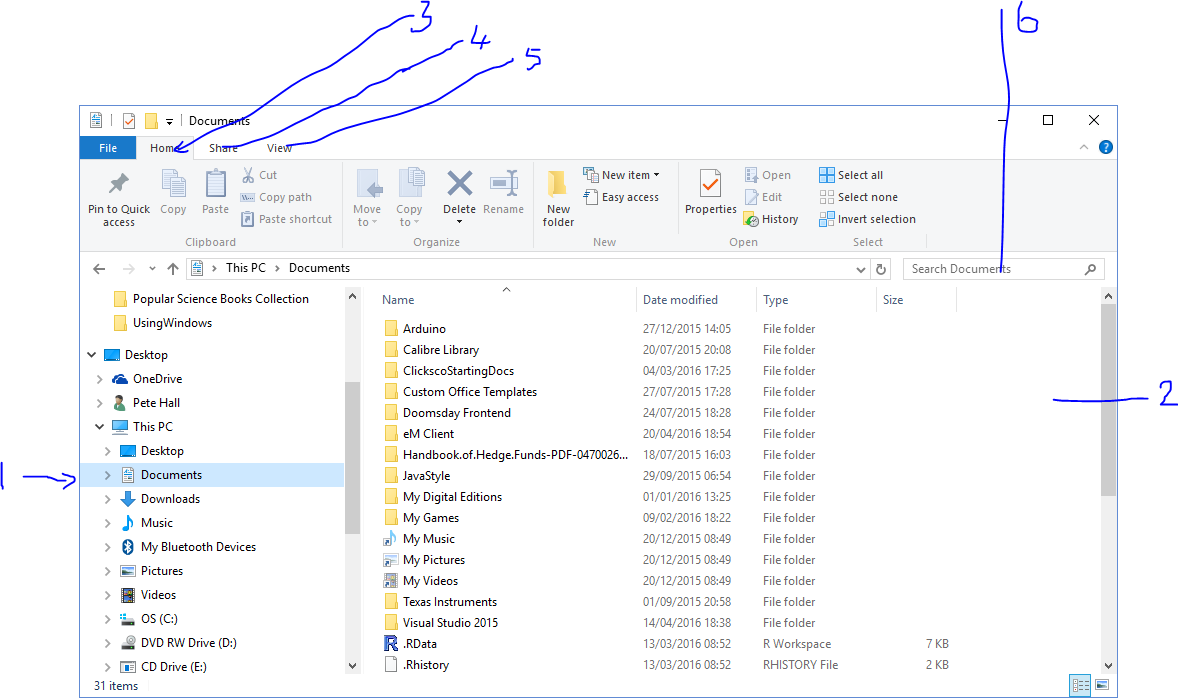Files and folders
A file is something that contains infomation - for example a letter, a picture, some text a video or music. Programs are also stored as files.
A folder is a container for files and are a way to orgranise groups of files. It's a bit like a filing cabinet that contains file-folders. Folders can store other folders as well as files. A folder within a folder is normally called a subfolder. You can create any number of files within a folder and any number of subfolders.
Windows provides a number of standard folders - Documents, Pictures, Videos and Music - that you can use as standard places to start. So if you have a document, you can store it in that folder (or a subfolder). So, for example you can create a subfolder called Work, in the Documents folder. In Work you can put all work-related documents.
File Explorer
File Explorer is a program that you can use to view the files and folders on your PC. You can start File Explorer in a number of ways. The two easiest are
- Click on the start button and select File Explorer from the list (it's around 4th from the bottom)
- Click on the file explorer icon in the taskbar

File explorer allows you to create folders and new files. You can copy or move files from one folder to another. The left hand side shows the current folder and the right hand side contains the files and subfolders in that folder. You can double-click on a folder to see the files and subfolders in that folder. If you double click on a file then Windows will try and open it. If it doesn't know how to open it then it will ask you for a program to open the file.

Parts of file explorer
- The folder we are looking at in the right hand panel is highlighted
- These are the subfolder and files in the selected folder
- The Home tab has a Ribbon with icons for the common tasks for files
- The Share tab has a ribbon with icons for various ways of sharing files
- The View tab has a ribbon with icons for how the files and folders appear in File explorer
- The Search box allows you to find files containing words or phrases
A good view is 'Large Icons' - go to the View tab and pick Large Icons. The icons give a good clue as to the program that will be used to open the file. Also useful is the 'Preview Pane' - if this is ticked, and Windows knows how to open a file then it will try to show a preview of the contents of the file. This can take a short while to refresh so be patient.
Also in the View tab is a sort by button. Clicking on this gives different options for the order in which the items in the right hand panel are displayed. This is useful when you know that you changed a file recently but can't remember exactly what it is called: Click on the Sort by button, select Date modified and tick the Descending option (near the bottom of the list). The most recent files will then be at the start of the list.
Using files from Applications
In Notepad and other applications when the File->Open menu is used then by default the dialog box will be opened in the Documents library. Once a file is opened then most applications will remember which folder was used to open the file. Many applications will also remember the folder used the last time the file was opened.
The dialog used for the file menu is just a different view of the same file and folders as you see in explorer. The dialog box normally only shows files that are suitable for that application so some files might appeat to be missing. The file dialog box has a "filter" at the bottom of the window - often their is an option to show all file (often shown as *.*).
Lesson 3